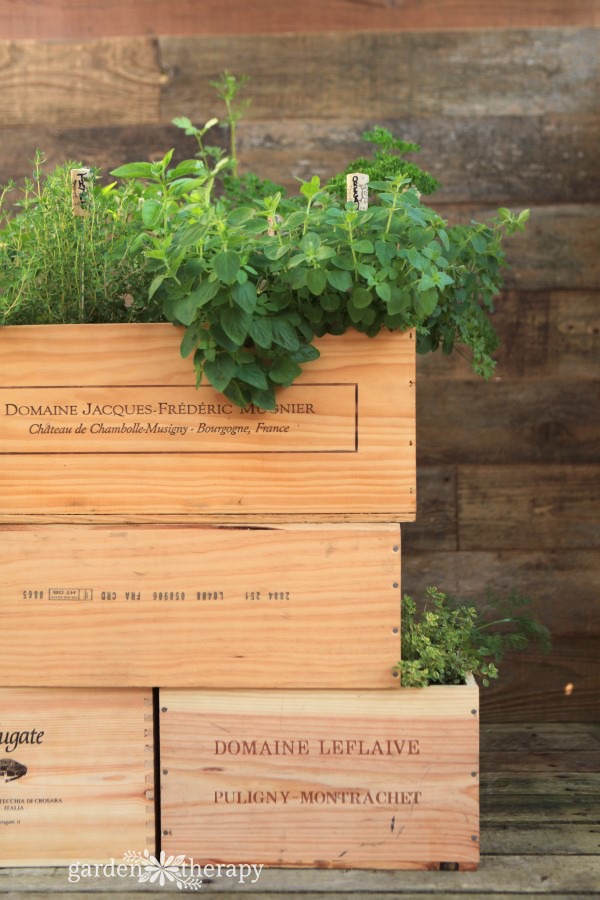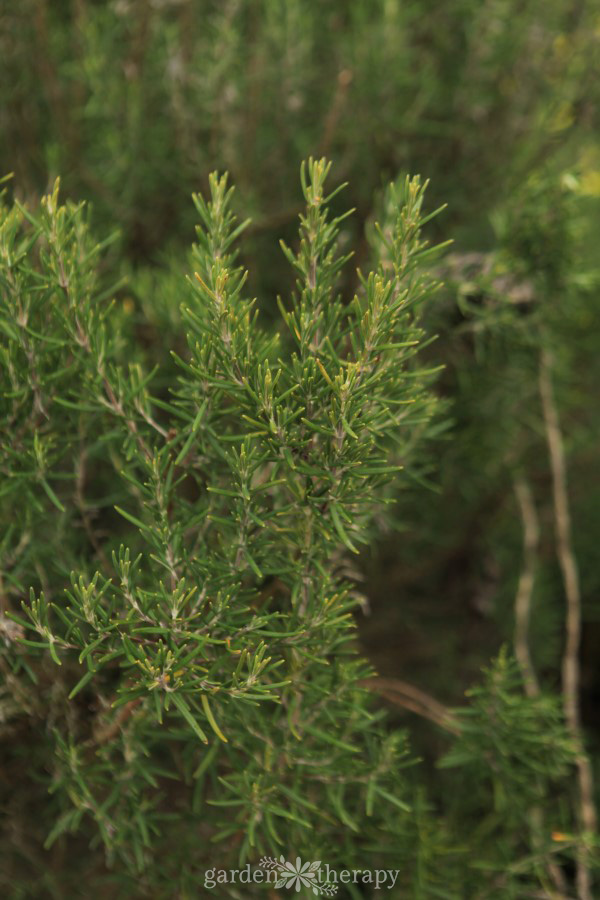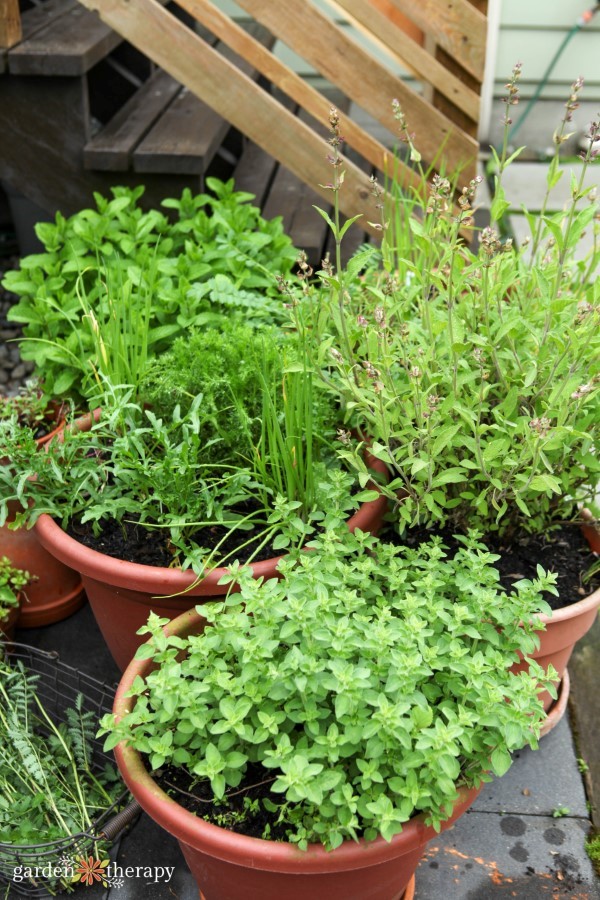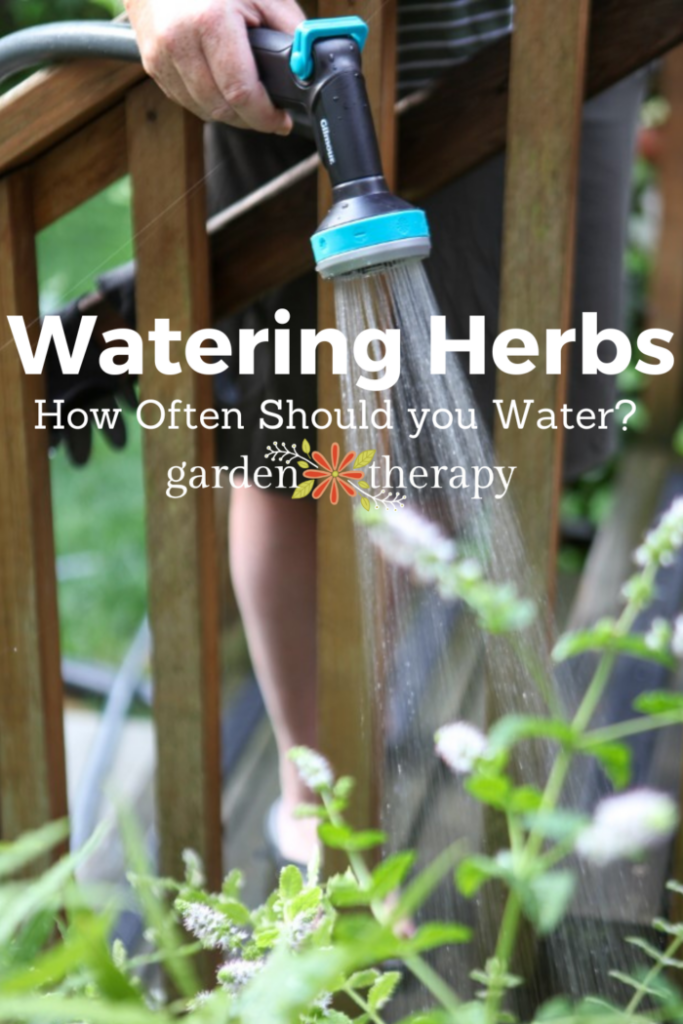Are herbs heavy drinkers? Do they wilt at the first sign of dry soil? Depending on where you grow your herbs, the watering they require will change. Here’s everything you need to know about how often to water herbs in your garden and home.

In this post, you will learn:
- How Often to Water Herbs
- How Often to Water Herbs in Pots
- How Often to Water Herbs Indoors
- Water Needs for Common Herbs
- Frequently Asked Questions About Watering Herbs
- More Posts About Herbs
How Often to Water Herbs
Every herb will have different needs than others, but generally, you’ll need to water your herbs 1-2 times a week.
Before you water, however, make sure to check that the plant is dry and actually needs some water. You don’t want to overwater your herb!
Stick your finger in the soil to test the dryness of the soil. If it feels dry below the top layer of soil, it’s time for watering!
When watering, water in the morning to prevent it from evaporating and give your herbs a big drink. It’s better to water your plants less often but with more water.
How Often to Water Herbs in Pots
Herbs in pots will require more frequent watering than herbs planted in the ground.
Container plants are disadvantaged because they only have so much soil from which to get their water, nutrients, and aeration. You need to give them a little more attention!
The soil will dry out quicker, so you may need to water more often.
When watering, be careful that the soil actually drinks up the water. Oftentimes, most of the water runs along the side of the pot. Or the soil has become so dry it will become hydrophobic to the water.
Like herbs outside, you will want to give them a deep watering in the morning.
How Often to Water Herbs Indoors
Herbs are outdoor plants, so it takes a little more work to make them happy inside. With watering herbs inside, you may not need to grab your watering can as often.
Since they’re not exposed to winds and sun, they won’t dry out as fast (unless they’re by a heating vent or sunny windowsill, you may encounter the opposite).
Water your indoor herbs and those in small containers through the bottom if possible. Your plant pots need to have drainage holes to do this—and they should for their health!
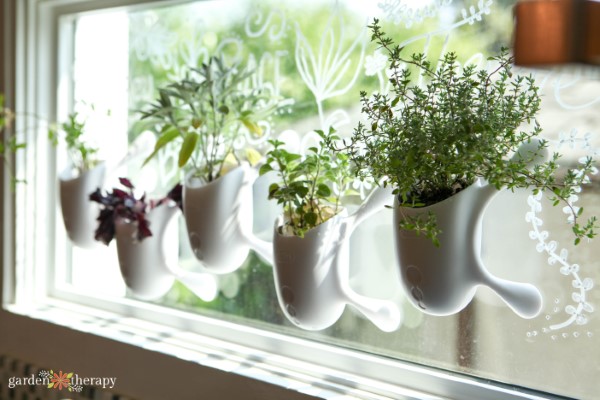
To water from the bottom, place the herb containers in a bowl or tub of water. Let the plant sit for an hour or two, and the soil will soak up the water. It’s one of the best ways to ensure the roots get hydrated thoroughly.
See my guide for more tips on watering indoor plants.
Water Needs for Common Herbs
Every herb will have different watering needs based on where they come from. For instance, Mediterranean herbs are much more likely to be drought tolerant, whereas some get dramatic at first sight of dryness.
Here are the water requirements for some common herbs:
- Mint: water loving. Thrives in moderately moist soil.
- Parsley: water loving. Thrives in moderately moist soil.
- Bay: drought tolerant. Avoid soggy soil.
- Basil: water loving. Thrives in moderately moist soil.
- Oregano: drought tolerant. Avoid soggy soil.
- Cilantro: needs a moderate amount of water.
- Rosemary: drought tolerant. Avoid soggy soil.
- Sage: drought tolerant. Avoid soggy soil.
- Thyme: drought tolerant. Avoid soggy soil.
- Dill: needs a moderate amount of water.
- Marjoram: drought tolerant. Avoid soggy soil.
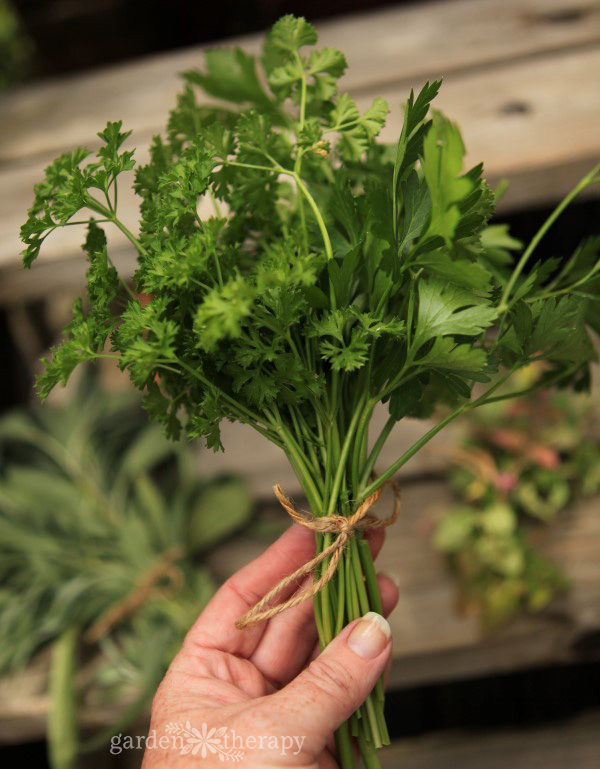
Frequently Asked Questions About Watering Herbs
Like any plant, you can easily overwater your herbs. This can lead to root rot, fungus gnats, yellowing leaves, and more.
Ensure any herbs in containers have drainage holes, and check the soil to see if it’s dry before watering.
If in containers, water until water begins to drain through the drainage holes. Alternatively, you can try watering from the bottom.
You want to water plants outdoors until they are soaked at least an inch deep. Stick your finger in the soil and water until it’s a knuckle-deep.
Now that you know how to water your herbs, make sure they are in the right soil too. Here’s a post about the best soil for herbs (you might be surprised!).
